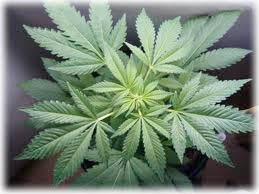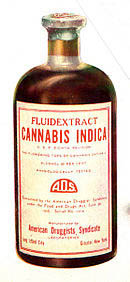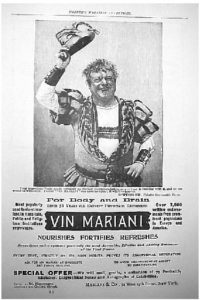 “Within the infant rind of this small flower
“Within the infant rind of this small flower
Poison hath residence and medicine power.”
(Romeo and Juliet, act 2, sc. 3
Having never partaken of the substance in question, I feel entitled to express an opinion, based on what I read and researched on the subject.
Beginning last year, over 100 families have moved to Colorado from various states in the Nation. The reason? To be able to administer cannabis to their sick children, who had been made worse by other medicines, or to whom the proposed remedies were dramatically worse than the disease, as we will see in an instant. Colorado is currently the only state where cannabis is legal. There are other states with some legal avenues available but Colorado is the most liberal.
That various chemicals of the cannabis plant have strong medicinal power is proven and sustained by a millenary history. However, for the average reader, the very appearance of the word “cannabis”, may trigger a mental association with “alternate life-styles”, or with gateways to a life of addiction, sloth, debauchery and crime. If any such reader will admit the effect on him, he will have recognized but one instance of how effective is centralized power in molding the mind of the many. Besides, the greatest part of mankind have no other reason for their opinion than they are in fashion.
It is generally entertaining, to an inquisitive reader, to trace a sentiment to its original source. And it will surprise some that in the XIX century, the attitude towards drugs was completely different. For example, cocaine is an effective local anesthetic and some of its earliest use exploited the property, as in the (at the time) renowned “Cocaine toothache drops”.
Then there was the famous coca-wine, cocaine-laced “Vin Mariani” – as in the advertisement from Harper’s Magazine of 1894. The caption reads, “Your marvelous Tonic needs certainly no further recommendation as everyone is familiar with it, and no one would be without it. I claim ‘VIN MARIANI’ can have no equal; it will live forever.” The advertisement further adds that Vin Mariani has “over 7000 endorsements from prominent physicians in Europe and America”. Coca-wine was so popular that even Pope Leo XIII endorsed it.
It is not widely known that The Virginia Company, by decree of King James in 1619, order ed every colonist to grow cannabis plants specifically for export. George Washongton grew hemp at Mount Vernon as one of his three primary crops. The use of hemp for rope and fabric was ubiquitous throughout the 18th and 19th centuries in the United States. Pharmaceutical cannabis became available in American pharmacies in the 1850s. It followed the introduction to its use in Western medicine by the British doctor William O’Shaughnessy, whose work also led to the practice of intravenous injections.
ed every colonist to grow cannabis plants specifically for export. George Washongton grew hemp at Mount Vernon as one of his three primary crops. The use of hemp for rope and fabric was ubiquitous throughout the 18th and 19th centuries in the United States. Pharmaceutical cannabis became available in American pharmacies in the 1850s. It followed the introduction to its use in Western medicine by the British doctor William O’Shaughnessy, whose work also led to the practice of intravenous injections.
Cannabis prohibition began in the XXth century in states where white minorities ruled black majorities. In the US, use of cannabis was assumed to be a Mexican habit (hence the name marijuana). Therefore the prohibition of cannabis became linked with the general attitude of associating lower class status to Latinos. Furthermore, though some historians dispute it, hemp can be used to make paper. As such it would compete with wood cut from forests in the production of paper. Hence, by making the cultivation of hemp illegal, competition was eliminated.
That the legal sale and distribution of cannabis does not cause national subversions, revolutions or upheavals is a fact undisputed by evidence – see Holland, Portugal, Uruguay etc. Nor civilization as we know it, has ceased in Colorado.
Let’s return to one example of the families who moved to Colorado to become “marijuana refugees.” Madeleine, nine-year-old daughter of Dara Lightle suffered from epilepsy. Treatment with various medications did not cure the problem and caused horrible side-effects. In the end, the doctors recommended that the left half of the child’s brain be removed. Faced with this almost unimaginable option, and having heard that cannabis oil had successfully treated patients with the same condition, mother, family and child moved to Colorado from Virginia in 2013. In a period of three months there was a remarkable improvement. A recent TV interview showed how dramatic was the change in Madeleine. According to her mother, the seizures have stopped, Madeleine has started reading, doing simple maths and wishes to learn – something unthinkable as late as last year. Similar results have been reported by the families of the other marijuana refugees.
Why then the resistance by the authorities and by the medical establishment? All answers, of course, can be disputed or denied, with various degrees of fierceness.
One answer is that marijuana works in a way similar to cortisone, or steroids. (I am not speaking as an expert but as a reader of related sources). Steroids are effective in a variety of different pathological processes, including allergy (anaphylactic shock, asthma, conjunctivitis, eczema etc.); auto-immune disorders, life-threatening infectious diseases; acute inflammatory disorders and potentially lethal swellings of the brain and spinal cord following an injury.
However, the precise causes of many of these diseases and disorders remain unknown. In this lies the revolutionary significance of steroids. They subverted the common understanding of the progress of medicine. In short, it is not necessary to wait to understand the complexity of the illness, for the patient to feel better after taking a prescription of cortisone.
That is, cortisone plays a crucial role in the body’s ability to heal itself though the beneficial effects of the medicine on inflammation – inflammation which is at the origin of a number of illnesses that cannot as yet be linked to a precise sequence of cause and effect. Cannabis seems to act like cortisone in the conditions that can be alleviated or cured.
It is harshly denied that cannabis is not legalized so as to maintain high the level of prison population. Also, legalized sales would substitute contraband street peddling and the medicament would become cheap, as the plant is fairly tolerant of growing conditions. In turn, this may hurt the pharmaceutical industry.
Currently, a synthetic form of marijuana exists and it is called “Marinol”. But it is expensive and has debilitating and frightening side effects.
Under the theory of disaster capitalism, a reduction in the rate of incarceration would lower the profits of the prison industry, or, as it is called today, the prison-industrial-complex. According to statistics, an incarcerated adult earns 40 thousand $ per year to the industry, an incarcerated youth up to 80 thousand $ per year.
Economists and pundits do not raise the issue. Or rather, they fail to discuss that in the balance sheet of disaster capitalism, what is a loss to one is a profit to another. A simple and economic medicine is a plus for the patient and a minus for the pharmaceutical industry. A free man is a plus for his dignity but a minus, both for the prison industry and for the DEA (drug enforcement agency). Without mentioning that a scaling-down of the now sempiternal war on drugs may render many drug enforcement agents redundant.
In the play. Fr. Lawrence is a naturopath and dabbles in chemistry and herbal pharmacology.
